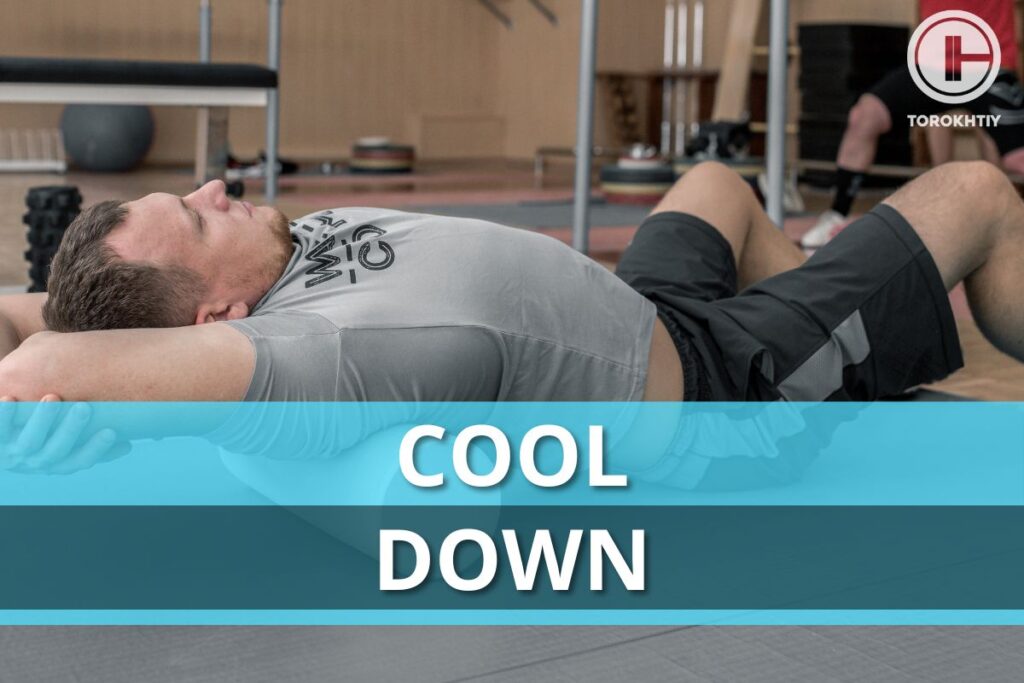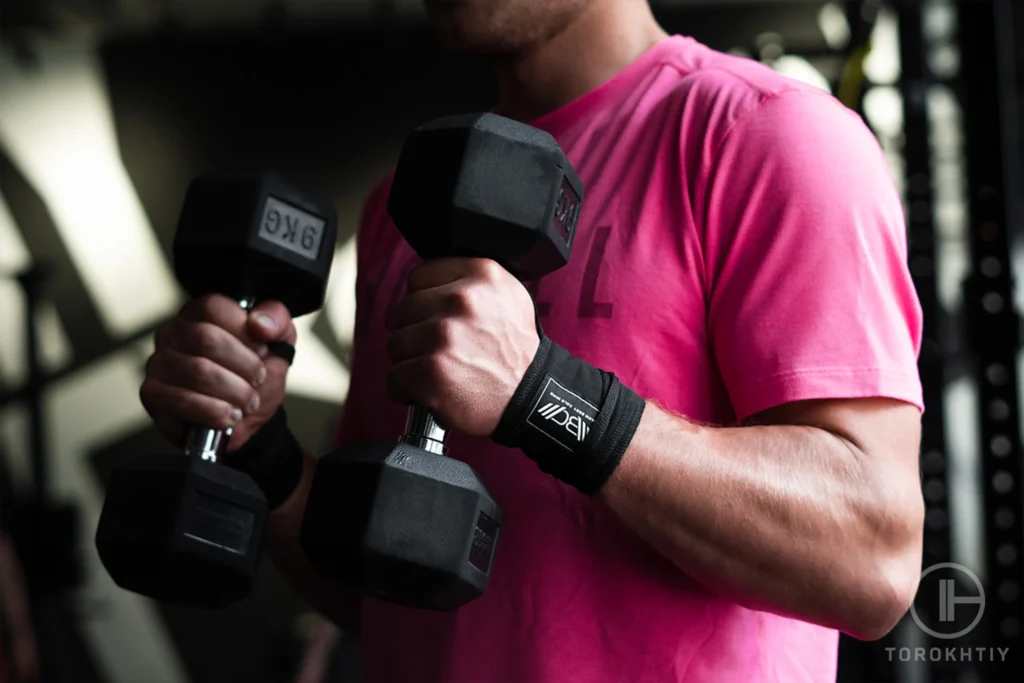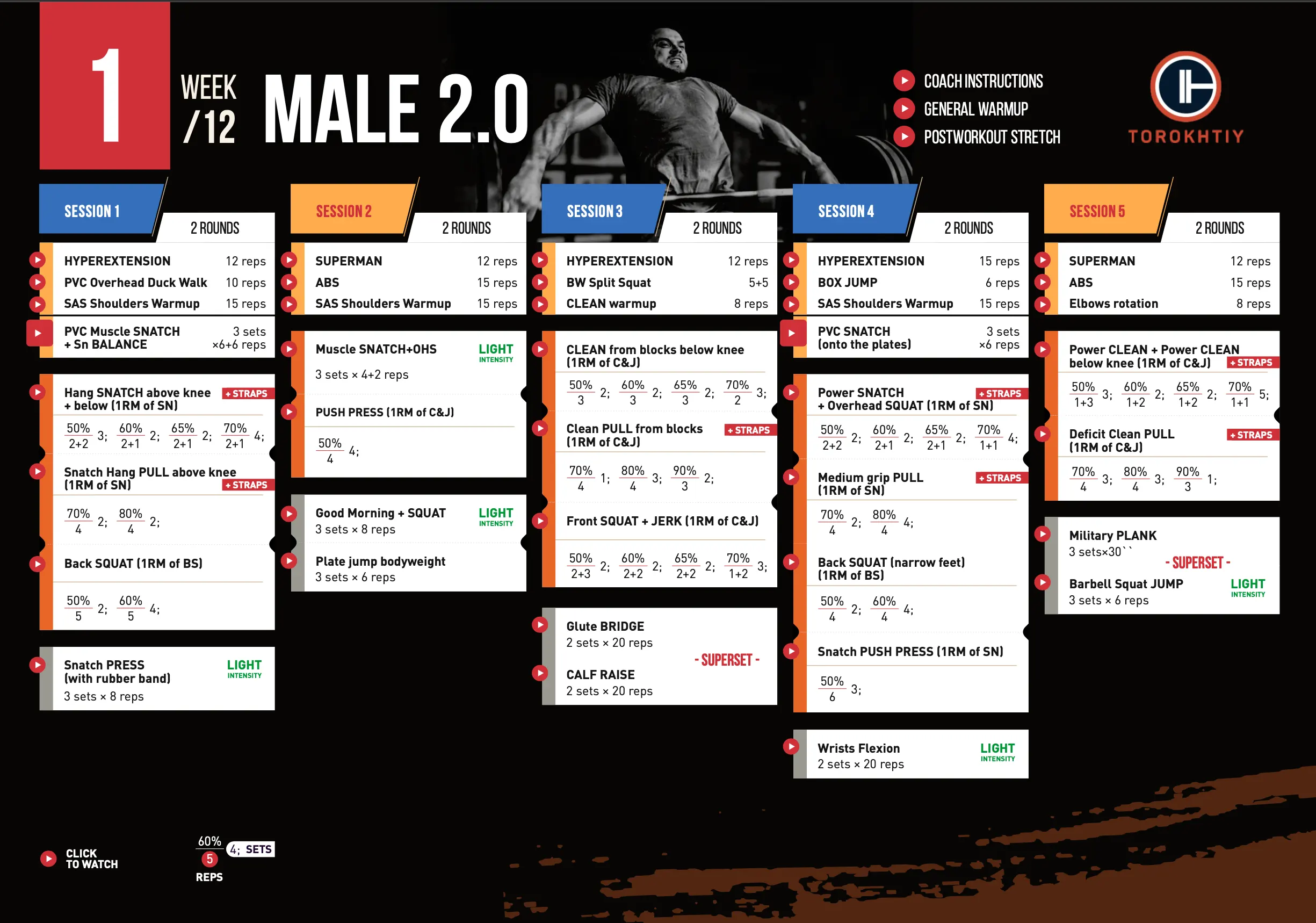Cool Down
Author:
Unlock your full potential by engaging with our experts and community! Have questions about your fitness journey or looking for expert advice on weightlifting techniques? Don’t hesitate — leave a comment below and Sergii Putsov will provide a personalized answer and insights to help you reach your goals.
Torokhtiy is reader-supported. Some links are affiliate links, and we may earn a commission at no extra cost to you. See our disclosure page for details.

The story with the correct cool down and the right training ending is often not the same as that required by physiology and sports science, because athletes are lazy or they are in a hurry to solve their business matters or they simply do not know and do not understand why this part of the training is needed at all. It´s both embarrassing and funny to admit but in my childhood, when the trainer left the gym a little earlier than the training ended, he always told us: “to work on flexibility and mobility, do relaxation exercises.” We nodded our heads with a serious look, but after exactly 3 minutes we were already playing football in the backyard of our school.
As I mentioned earlier in my article about Warm-up training experience, studying at the university, working with rehabilitation and physical therapists helped me to better understand why warm-up and cool down are just as important as the main part of the training.
Follow us!

Free!
Get a 2-week Weightlifting Program as a bonus for the subscription to kickstart your training plan!

Free!
Speaking of the Cool down, I would highlight 4 important factors:
You may like it:
- Detailed Olympic Weightlifting Program For Beginners
- 12-Week Weightlifting Program For Women (Detailed Example)
- Create Your Olympic Weightlifting Program (Examples Included)
- Accelerating the removal of lactate and reducing pain.
- Reducing the loss of consciousness or dizziness risk.
- Muscle spasms neutralization.
- Reducing the hormone level in the blood.
1. Accelerating the removal of lactate and reducing pain
The accumulation of lactate in the muscles when performing a standard load is not a leading factor in the DOMS (Delayed onset muscle soreness) occurrence. DOMS is the reaction of muscles to unusual work, as a result of which increased traumatization of muscle fibers occurs. Functional training can be unusual for our bodies on a regular basis and may cause painful sensations. This is not a big problem, you just need to work with it correctly. After any high-intensity workouts, low-intensity cardio is recommended. In this case, lactate acts as a source of energy and neutralizes itself.
An interesting thing I discovered for myself when I became an experienced athlete is that high-intensity training (from 80% or more) can cause a “late ignition” effect, especially in the case of experienced athletes. I mean that the DOMS occurs in 36-48 hours and not immediately. Therefore, in order to prevent hellish muscle pain, stretching and rolling is a must have after each workout.

2. Reducing the loss of consciousness or dizziness risk
I bet you´ve noticed that often after performing WOD, athletes lie on the floor and lift their legs. Yes, this has a secret meaning. The goal of this is to stabilize venous hemodynamics and outflow in the lower limbs. The problem is that an abrupt stop in physical activity after high-intensity work can provoke an increase in hydrostatic load on the venous outflow of the lower extremities, which can greatly lower blood pressure. As a result of this defense reaction, the heart rate rises sharply an the heart needs more blood and oxygen, which the vascular system cannot provide and the athlete loses consciousness. In order to avoid this trouble, remember about the coll down.
3. Muscle spasms neutralization
When performing exercises aimed at muscle relaxation and stretching, muscle spasms, cramps and involuntary muscle contractions are neutralized. It is necessary to understand that after high-intensity or speed-strength work, large muscles need to be in a state of static stretching for a long time to relax. As an example, let’s say we devote 3 minutes to each arm and leg stretching, and 4 minutes to the back and torso — it will be 16 minutes total and this will be the minimum. Imagine my surprise at athletes who say that the whole stretching can be done in 3 minutes.
4. Reducing the hormone level in the blood
As we all know, active physical work requires a high level of functioning from our systems and the nervous system and hormones control these processes. For example, adrenaline and similar hormones such as catecholamine, epinephrine and norepinephrine, released during intense physical activity, are a stress factor for the heart. Performing low-intensity exercises in the final part of the lesson helps to reduce the activation of the cardiovascular system as a result of slowing the secretion of these hormones.
There is no one clear formula for a correct cool down. Depending on the direction of training cardio, sometimes stretching and rolling, and sometimes breathing exercises are required. The important point an athlete should remember is that after we put the body into working condition and have completed the training program, we need to return the body to a calm state and prepare it for recovery.
Summing up, it is pleasant to note that with functional training invading the fitness sphere, the attitude to warm-up and hitch becomes more and more respectful. I’m not afraid of these words – clients will increase physical fitness, and this all contributes to an improvement in both athletic performance and health.
WARM BODY – COLD MIND
You might be interested in:
Why Trust Us?
With over 20 years in Olympic weightlifting, strength training, nutrition coaching, and general fitness our team does its best to provide the audience with ultimate support and meet the needs and requirements of advanced athletes and professional lifters, as well as people who strive to open new opportunities and develop their physical capabilities with us.
By trusting the recommendations of our certified experts in coaching, nutrition, and sports training programming, as well as scientific consultants, and physiotherapists, we provide you with thorough, well-considered, and scientifically proven content. All the information given in the articles concerning workout programming, separate exercises, and athletic performance, in general, is based on verified data.
The product testing process is described in more detail here.
Author: Sergii Putsov
Head of Sport Science, PhD
Best Results: Snatch – 165 kg,
C&J – 200 kg
Sergii Putsov, Ph.D., is a former professional weightlifter and National team member, achieving multiple medals in the 94 kg weight category at national competitions. With a Master’s degree in “Olympic & Professional Sport Training” and a Sport Science Ph.D. from the International Olympic Academy, Greece, Sergii now leads as the Head of Sport Science. He specializes in designing training programs, writing insightful blog articles, providing live commentary at international weightlifting events, and conducting educational seminars worldwide alongside Olympic weightlifting expert Oleksiy Torokhtiy.




Still have questions after reading our article? Unlock your full potential by engaging with our experts and community! Don’t hesitate — leave a comment below and Sergii Putsov will provide a personalized answer and insights to help you reach your goals.